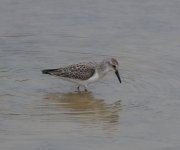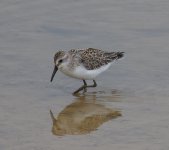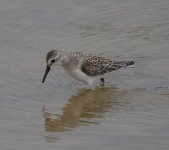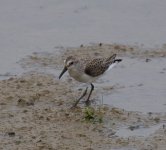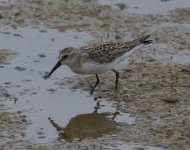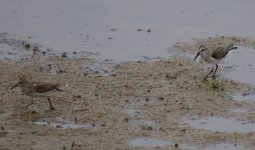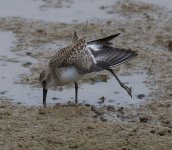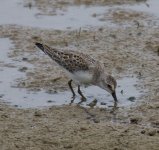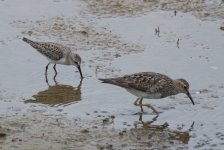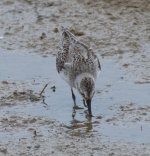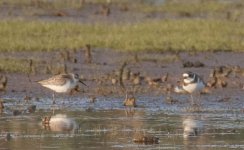Tom,
note, in the birds on ebird.org that you are referring to, the longer lower scapulars with thinner and more sharply defined anchor pattern, less extensive dark patch on ear coverts, less obvious eyering, whiter central breast, and also note that the rufous edges of the upper scapulars are clearly brighter than the crown.
In the bird(s) in the original post, the rufous edges are about the same brown colour as the crown, the lower scapulars (except for the odd winter feather already acquired) are quite short and are dominated by the dark anchor pattern (which is not as sharply defined), the pale eyering is very bold, the dark ear coverts form an extensive dark mask, and the breast centre is smudged with grey.
I don't see anything but Semipalmated Sandpipers in the original post.




